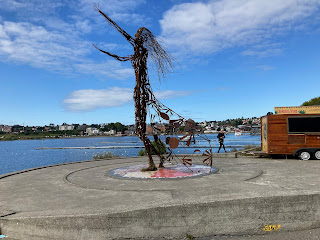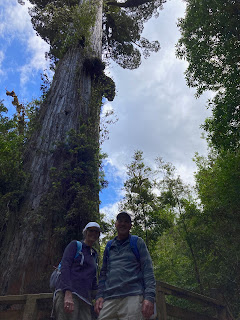Puerto Varas, Chile
We spent a day transiting from Bariloche, Argentina to Puerto Varas, Chile on what is known as the Cruce Andino, the Andean Crossing. This route was undertaken by Perito Moreno (the Jesuit missionary who befriended the native populations and worked to conserve the region's natural wonders). It has been a professional tourist route for over 100 years. The crossing involves 4 bus segments and 3 lake crossings as you climb through the Andes to cross from Argentina to Chile. Its an all-day adventure, so bring food and snacks and have your passports ready to both exit Argentina, via Argentine Border Control, and arrive in Chile at their border control (strict agricultural restrictions so no fruit or meat).
Cerro Tronador, "Thunder Mountain", named after the sounds of the calving glaciers. Highest peak in the area at 11,500'.
Puerto Varas is another tourist mecca, much smaller and less busy than Barloche, and is located on a large lake, Lago Llanquihue one of the largest lakes in the Chilean Lake District. The lake is surrounded by some of the more than 200 volcanoes that dot Chile, a very active portion of the Ring of Fire. PV is located a few miles away from the industrial town of Puerto Montt, a center for the Chilean Aquaculture industry featuring Salmon (2nd largest global exporter, after Norway). Puerto Montt also sports the regional airport.
We had a guided tour (Joaquin w/ LS Travel) of the nearby Alerce Andino National Park, Alerce is a tree species very similar to our Redwoods. 1-1/2 hour ride to get there via Puerto Montt, the local industrial and economic center (lots of day commuters). Rough 7 Km gravel road in, several cars couldn’t make it. Good guide lots of dense rain forest and different eco zones as we hiked into the 2500 year old Alerce Millenaria Tree, massive. Beautiful waterfalls along the river, which the trail followed. Back home via the coast of the Pacific, lots of mussel aquaculture as well as salmon, oysters and clams (like quahogs).



















No comments:
Post a Comment